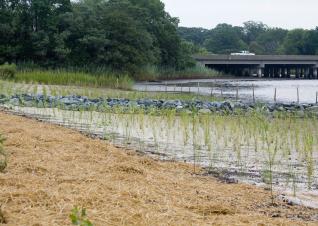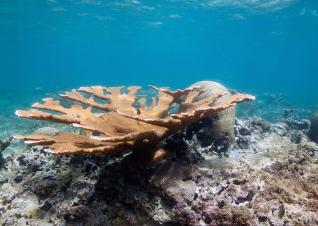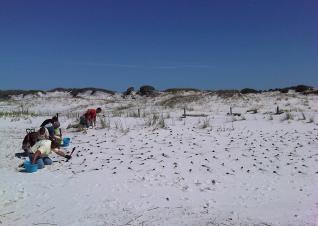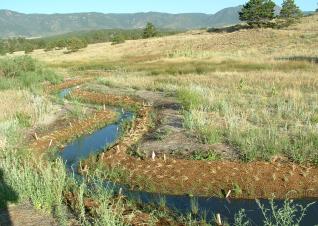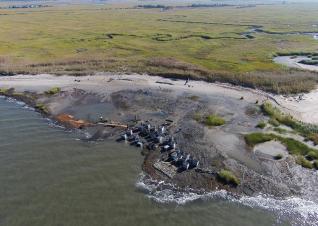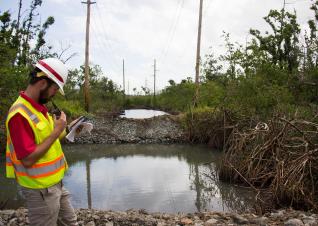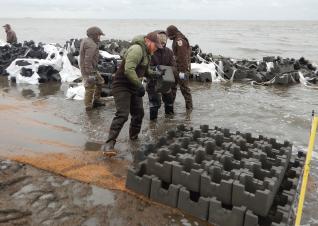Coastal marshes, also frequently called salt marshes, are partially flooded wetlands that are inundated by salt water brought in by the tides but can vary in salinity levels.
Let us know what you think of the Roadmap website. Provide your feedback →
Nature-Based Solutions Strategy Search
Other searches:
Find case studies →
Find tools and resources →
Coral reefs are the skeletons of marine invertebrates called coral, which form large underwater structures comprised of colonies.
A floodplain is a low-lying area directly adjacent to a waterbody and partially or fully flooded during high-water events.
Living shoreline creation refers to the process of planting vegetation along the shoreline and installing structures that help hold the vegetation in place.
Mangrove ecosystems are a form of coastal wetlands found in tropical and subtropical regions. These systems support halophytic (salt-loving) trees, shrubs, and other plants, and are dominated by mangrove trees.
Oysters are a cornerstone of coastal ecosystems and fisheries, providing structural protection to the coast as well as improving water quality.

